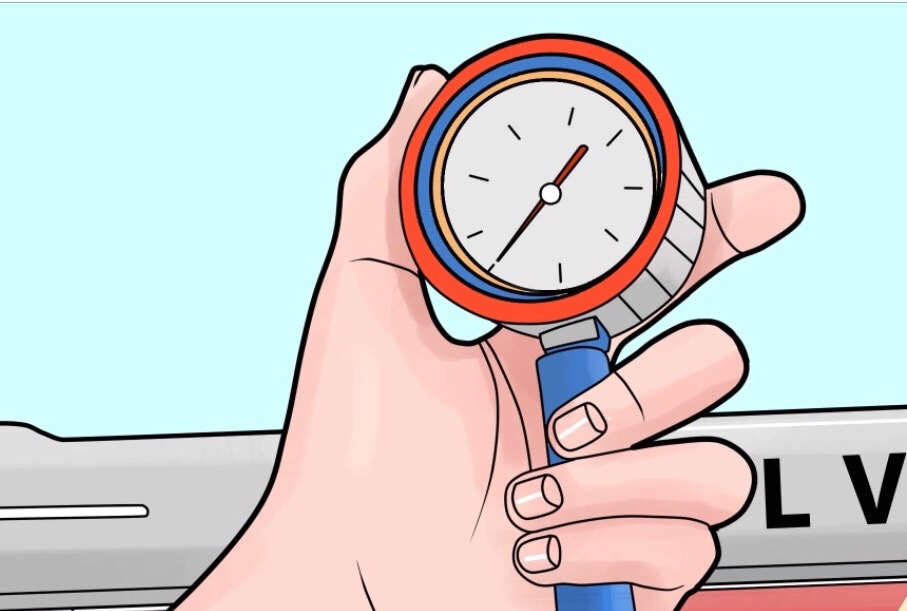 Cylinder compression basics
Cylinder compression basics
One of the many things I hear from customers is "Well, sure, compression is low, but at least they're close to the same in all the cylinders." As if that makes up for it. It doesn't. While it's true that being close to the same is beneficial, it is not so important that it will ever trump what the actual number is. Let me say it again. I will trade compression evenness across the board any day for a nice high average number. No contest. What the average compression is is many times more important, and this is ever more critical as the age of our bikes lead into the antique era. Cylinder compression is the foundation. I ask my customers to take compression readings before they send me their carburetors. I get a surprising amount of pushback on this.
Cylinder compression's importance
Cylinder compression is so basic a lot of us overlook it. Here are a few wrong ways of looking at this important test. One, it isn't a test relegated to when your bike has a lot of miles on it. I hear this all the time. "No, I haven't checked compression. My bike has only 12,000 miles on it." Wrong. It's important at any time, regardless of mileage. Rather than thinking of a compression test as a yardstick of old age, instead consider it a routine checkup able to catch any number of possible issues before they take you by surprise. Two, forget all that Internet nonsense about warming up the engine first. I know, some (though not all) Honda manuals advocate it, but no professional mechanic does this. Third, forget the teaspoon of oil. That's not really part of a compression test. It isn't even a good test, certainly not as good as the leakdown test that obviates it. Fourth, best practice is always to adjust the valve clearances before performing a compression test. Put them a little on the loose side. And use a good quality tester. Stay away from those rubber tipped jobs and testers with different sized screw-on adapters.
Valve recession
1970s Hondas have serious issues with valve recession. The very first determination in any revival effort then is to square away cylinder compression. If lower than 150 psi, loosen your valve clearances 0.002" to get some of it back, and in the mean time perform cylinder leakdown tests to pinpoint the actual issue.
Compression and carburetion
Cylinder compression directly affects carburetor mixture. Higher compression makes carburetion richer, lower compression makes it leanner. Probably 90 percent of the modifications folks make to their carburetors are attempts to unknowingly compensate for lower than normal cylinder compression. Compression really does cover a multitude of sins, making up as it does for less than perfect carburetion.
Compression and leakdown tests as a pair
One of the first things career mechanics learn is how to use a compression test and a leakdown test in engine troubleshooting, that is, use them together. People who are not vocational users of these two tools may not understand this, and might think one is simply a substitute for the other. But this is not so. The best use is to compare one against the other. Kind of like how exhaust gas analysis works, wherein two gases compared reveal a third picture not possible with either. Here's an example of how that works with compression and leakdown tests.
Let's say the engine is running poorly. A compression test indicates good compression, over 150 psi. But, the subsequent leakdown test is not so promising, showing a 20-30 percent loss. Wait. How can this be? How can the engine have good compression but also high leakdown? Easy. Receded valves. Even badly grooved valve faces often manage to seal adequately and average some sealing when repeatedly banged open and closed during a compression test. However, the completely static nature of a leakdown test will expose the bad valves. Wow.
Okay. Now another example from the opposite viewpoint. How about low leakdown combined with low compression? Huh? Is this possible? Sure is. But what does it mean? This is the classic symptom of retarded valve timing, typically from worn or mistimed cam chains or belts, which results in low cylinder compression, despite the good valve and cylinder seal. (And incidentally, often caused by the use of K&N air filters.)
So you see, the two tests -- compression and leakdown -- work best not individually but in tandem and that is the best way to use them to get a complete diagnostic picture.
Recommended reading:
Building and using the cylinder leakdown tester
Where did the compression go?
Reasons your compression is low
The truth about cylinder compression

 ®
®
 Cylinder compression basics
Cylinder compression basics